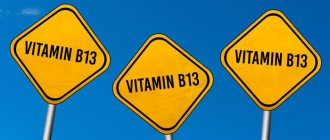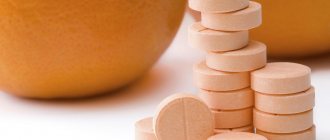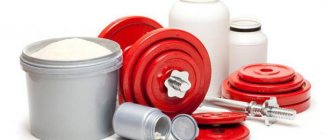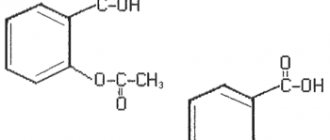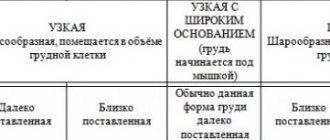Aspartic acid (D-Aspartic Acid, abbreviated as DAA) is a non-essential amino acid that is genetically encoded in the human body. Other names: aspartate, or aminosuccinic acid. It can be found in all living organisms, both as part of protein compounds and in free form. Nutritional supplements with this substance are necessary for the normal functioning of several organ systems. Aspartic acid plays the role of a neurotransmitter in the central nervous system and also stimulates the production of a group of important hormones.
Aspartic acid: synthesis, formation
The process of synthesis of aspartic acid by a living organism occurs by converting the essential amino acid threonine into an isomer of another amino acid - homoserine with further oxidative reactions.
The substance was first discovered at the beginning of the 19th century. Scientists Etienne Ossiana Henry and Auguste-Arthur Plisson obtained the acid as a result of the reaction of the substance asparagine with water in the presence of strong mineral acids. Previously, asparagine was isolated from asparagus juice by boiling. A few years later, aspartic acid was recognized as the most important component of proteins.
In modern production, the amino acid is obtained by condensation of several esters (acetaminomalonic acid and chloroacetic acid). The carboxyl group is removed from the resulting products, followed by hydrolysis.
To compensate for the lack of aspartic acid in the body, you can eat certain foods: meat, cane, asparagus, oatmeal, avocado, soybeans. This food contains too little amino acid, so only dietary supplements with a high concentration of the substance are suitable for medicinal purposes.
Functions of aspartic acid: energy
Aspartic acid is a source of energy for the body; it is not without reason that it is found in the greatest quantities in cells that perform work: in cardiocytes (heart cells), hepatocytes (liver cells), myocytes (muscle cells). With the participation of the enzyme AST and pyridoxal phosphate (vitamin B6), aspartic acid gives up its amine head to glutamic acid, and itself is converted into oxalacetate, a substance that triggers the energy Krebs Cycle. The cascade of biochemical transformations promotes the storage of biochemical energy in the phosphorus bonds of ATP molecules.
Oxalacetate, if necessary, can become a source for the production of glucose, a molecule that provides energy to muscles and nerve tissue. Aspartate is a glucogenic amino acid. If there is an excess of it, the liver will quickly process it into glycogen, and this is not the worst option. Glucose is a source of fat. Fat also provides energy, and much more, but it is more difficult to extract it.
And that is not all. Aspragic acid gives up its nitrogen to build purine nucleotides: adenine and guanine. Adenine is the basis of a molecule in which chemical energy is stored - ATP - Adenosine TriPhosphoric acid.
Aspartic acid is also involved in the synthesis of AMP (Adenosine Monophosphoric acid) - this is a preform to which two additional phosphorus tails are attached to form ATP - a highly energetic molecule in which chemical energy is stored in phosphorus bonds.
Aspartic acid is a substance that provides energy to the biochemical conveyor belt.
Aspartic acid: formula
The formula for aspartic acid was discovered in 1833 by the scientist J. Liebig. It has the form C4 H7 NO4.
The structural formula of the acid is as follows. You need to know that aspartic acid has several forms that differ in structure: L and D forms. The first is found in the human body in large quantities, and the second is found only in adults.
Despite its general functions, L-aspartic acid is responsible for protein synthesis and removal of toxic substances, and the D form normalizes brain function and stimulates hormone production. Such differentiation is not particularly important, because when the L-form enters the body, it is transformed into the D-amino acid isomer.
Biologically active additives
The diet of athletes does not always meet the need for aspartate. Therefore, many manufacturers offer dietary supplements that contain this component, for example:
- Trec Nutrition DAA Ultra.
- D-Aspartic Acid from AI Sports Nutrition.
- D-Aspartic Acid from Be First.
By increasing the rate of hormone production, it becomes possible to increase the load, and the body’s recovery process is also accelerated.
Dosage
The recommended intake of the supplement is 3 grams per day. They must be divided into three doses and consumed within three weeks. After this, you need to take a break of 1-2 weeks and repeat the course again. In this case, it is necessary to maintain the training regimen, gradually increasing the load.
Release form
For use, you can choose any convenient form of release. Supplements are available in powder, capsule and tablet form.
Contraindications
Due to the fact that in a young healthy body the amino acid is produced in sufficient quantities, there is no need to consume it additionally. Its use is especially contraindicated in nursing and pregnant women, as well as children under 18 years of age.
Compatibility with other sports nutrition components
For athletes, an important factor in the use of supplements is their combination with other components of the diet. Aspartic acid does not suppress the action of the active components of sports nutrition and combines well with various proteins and gainers. The main condition is to take a 20-minute break between doses.
Caution should be taken when taking the amino acid with other drugs that increase the production of the hormone testosterone, otherwise there is a risk of hormonal imbalance.
Aspartic acid: composition
The composition of dietary supplements with aspartic acid is quite simple: they contain only one component that affects hormone levels and other indicators. The high concentration of acid allows you to achieve maximum effect in a short period of time.
Depending on the type of production, the preparations may contain additional ingredients - residual products. For example, wheat, milk, peanuts, herbs and more. They are harmless to the body and are contained in very small quantities, which does not affect the properties of the supplement in any way.
What foods contain aspartic acid?
Aspargine (a derivative of aspartic acid) is found in optimal form in beekeeping products. The acid itself can be obtained from animal products: all types of meat, including smoked meat, dairy products, fish, eggs.
Another acid is found in plant products:
- legumes,
- brewer's yeast,
- molasses,
- nuts,
- asparagus,
- avocado.
On this topic:
What are the benefits of avocado?
Aspartic acid: properties
The properties of aspartic acid are widely known to various categories of people: athletes, men and women with sexual problems or impaired cognitive functions.
The positive properties of aspartic amino acid include:
- is a component of proteins that serve as material for building cells;
- normalizes the functioning of the endocrine system through interaction with the hypothalamus;
- promotes the production of somatropin (growth hormone) and the main sex hormones of men and women (testosterone, progesterone);
- plays the role of a neurotransmitter in the central nervous system, improves brain function;
- has antibactericidal properties;
- necessary for the formation of other amino acids, such as lysine, methionine, arginine;
- promotes the movement of mineral compounds that support the normal functioning of RNA and DNA;
- enhances the protective function of the immune system;
- prevents the proliferation of microorganisms and neutralizes their toxic effects by increasing the production of antibodies;
- rids the body of nitrogen metabolism products, including ammonia;
- protects nerve cells from pathogenic effects;
- fights mental disorders, depressed mood;
- increases muscle mass.
It is worth noting that aspartic acid undergoes an oxidation stage in mitochondria, forming the energy necessary for the body. This amino acid is not only a source of energy, but also the most important energy stimulator of the brain.
aspartic acid: functions in the human body
The physiological role is not limited to regulating the formation and functioning of the central nervous system and endocrine system. Sports nutrition based on Aspartic Acid:
- Helps strengthen the immune system, increases the production of immunoglobulin and antibodies.
- Resists early fatigue and chronic fatigue.
- Stimulates the formation of other amino acids and the conversion of carbohydrates into energy.
- Participates in the metabolism of nitrogenous substances and the transport of trace elements into cells.
- Positively affects brain function.
- Removes toxins.
- Increases resistance to stress, physical and emotional stress.
Among the unique abilities of DAA is ion transport, “pulling” potassium and magnesium ions through cell membranes. Potassium-magnesium salts of aspartic acid (aspartates) are sold in health food stores and are used in sports to increase physical endurance by accelerating the elimination of ammonia.
Aspartic acid: application
Aspartic acid is used in several completely different cases, such as:
- depression (you can also get rid of it with fish oil, ademetionine, phosphatidylserine);
- cognitive disorders (impaired thinking, memory impairment);
- erectile dysfunction and decreased sexual activity;
- for the purpose of building muscles for athletes;
- hormonal imbalance (hormone deficiency);
- CNS disorders;
- for the treatment of cardiovascular diseases;
- visual impairment (myopia, nyctalopia);
- toxic liver contamination;
- chronic fatigue syndrome;
- postoperative period or recovery after a serious illness.
It is important that with an insufficient amount of amino acid in the body, patients experience memory impairment, a depressed state and a reluctance to engage in vigorous activity. However, with an increased amount of the substance in the body, a person feels nervous and aggressive, and is unable to control emotions. There are even changes in blood density, which often causes blood clots in the blood vessels.
Typically, the use of aspartic acid is necessary for all people after 40 years of age. At this age, even in a healthy person, its level begins to decrease. Therefore, in order to prevent possible diseases, it is advisable to take acid without a good reason.
Functions of aspartic acid: transamination
The amine nitrogen of almost all amino acids (with the exception of lysine, threonine and proline) is converted to glutamate through aminotransferase enzymes. The amino nitrogen of these three amino acids also ends up in glutamic acid, but in a more complex way. This is how amine nitrogen is deposited in the body. The accumulation of amine nitrogen in the form of glutamic acid occurs in the cytosol of cells. Specific translocase enzymes then transport glutamate to the mitochondria, where specific AST is active. AST converts glutamate back into α-ketoglutarate, which again enters into transamination reactions, taking on the amine heads of various amino acids, and again turning into glutamate.
Aspartate (aspartic acid), formed in mitochondria in trans-amination reactions between oxalacetate and glutamate, can be transported into the cell cytosol, where it donates the amine group NH3 to the urea cycle, forming the amino acid arginine. This reaction, constituting the Aspartate-Arginine-Succinate shunt, provides a link between the pathways that utilize amino groups and the carbon skeleton of amino acids. The utilization of amino groups in the synthesis of harmless urea occurs in the cells of the liver, and to a lesser extent, the kidneys.
Transamination reactions are the initial step in the breakdown of amino acids in the body. As a result, amine nitrogen is transferred through aspartic acid to glutamic acid, and the carbon skeleton either burns in the Krebs cycle to produce energy, or goes to the synthesis of glucose and ketone bodies. Aspartic acid acts as an intermediary in the transfer of amine nitrogen to the depot, which is glutamic acid. Only glutamic acid in human tissues is capable of undergoing direct oxidative deamination. All other amino acids undergo indirect deamination with the transfer of NH3 amine groups initially to glutamic acid, and the second stage is the deamination of glutamate.
In muscle tissue during intense physical activity, another indirect deamination pathway operates with the direct participation of aspartic acid. The initial path is the same as in conventional indirect deamination, when the amine groups of almost all amino acids are assembled into glutamate. Then they are transferred from glutamate to aspartate (aspartic acid), then the amine head from aspartate is transferred to inosinic acid (IMP), resulting in AMP. Aspartate, having lost its amine head, turns into fumarate. Next, fumarate along the Krebs Cycle chain turns into malate, which turns into oxalacetate, which catches the amine head from glutamate to turn into aspartate. This ensures the operation of the conveyor for the transfer of amine nitrogen from the entire pool of amino acids to the IMP. AMP undergoes hydrolytic deamination, i.e. the enzyme AMP deaminase bites off the amine head of AMP, resulting in IMP, which is again ready to work on the conveyor and free ammonia NH3.
The presented diagram reflects the sequence of reactions of indirect oxidative deamination in muscle tissue during intense physical activity.
During intense muscular work, when this deamination pathway is involved, glucose is simultaneously utilized with the formation of lactic acid (lactate), which leads to acidification of the internal environment of the cell, and this is undesirable. The released ammonia has an alkaline reaction and neutralizes excess acidity.
There are 4 stages of the process:
- Transamination with α-ketoglutarate, formation of glutamate
- Transamination of glutamate with oxalacetate (AST enzyme), formation of aspartate
- The reaction of transfer of an amino group from aspartate to inosinic acid (IMF, Inosine Monophosphate), the formation of AMP (Adenosine Monophosphate) and fumarate
- Hydrolytic deamination of AMP with the release of ammonia NH3.
The chemical reactions of the first two stages were presented above.
The third stage is the reaction of transfer of the amino group from aspartate to inosinic acid, which occurs in two stages. At the first stage, under the influence of the enzyme AdenyloSuccitan Synthetase, Aspartic acid joins IMP, resulting in the formation of AdenyloSuccinate. The process involves the expenditure of energy, which is given off by GTP (Guanosine Triphosphate), while the phosphoric acid residue is split off, and GTP is converted into GDP (Guanosine Diphosphate). The enzyme AdenyloSuccinate Lyase then breaks down AdenyloSuccinate into AMP (Adenosine Monophosphate) and Fumaric acid (Fumarate).
Aspartic acid: testosterone
Scientists have proven that aspartic acid regulates the synthesis of testosterone, the main male sex hormone. This biologically active substance affects not only the production of sperm, but also the development of muscles and bones, and is capable of establishing an emotional background.
The increase in this hormone was first studied in studies on rats. A few years later, the effectiveness of aspartic acid was confirmed once again, but in this case the substance was taken by people. Thus, after 12 days of consuming the daily norm of aspartate , the level of the male hormone increased by almost half, which became a landmark discovery in the world of medicine.
The amino acid can also increase the production of its own gonadotropin. This hormone is produced in the body of a pregnant woman, as well as in the anterior pituitary gland in all people. It has a stimulating effect on the synthesis of male reproductive cells and is necessary for the normal development of the organs of the reproductive system.
For male hormones, it is beneficial to take bee pollen and pregnenolone. For elevated testosterone levels, inositol is prescribed.
Who should take D-aspartic acid?
Most people will benefit from taking DAA, but not everyone will benefit equally.
D-aspartic acid will benefit:
- Men over 21 years of age with testosterone levels below normal;
- For those who want to increase the production of anabolic hormones naturally;
- For those who have a weak libido or do not have time to recover between workouts.
It is advisable to monitor your testosterone levels by consulting a specialist while taking D-aspartic acid.
No need to take D-aspartic acid:
- Women;
- Men under 21 years of age or who have elevated testosterone levels (hypergonadism);
- Having elevated levels of dihydrotestosterone or estrogen;
- Having hyperthyroidism.
Aspartic acid: libido, erection
To restore libido and normalize erection, you need aspartic acid . This is due to the fact that it increases the natural production of sex hormones, which significantly affect sexual function.
Decreased libido, as well as enlarged breasts in men and prostate disease occur due to increased estrogen levels. This happens extremely rarely, but it significantly disrupts sex life. Aspartic acid will help combat this . Both men and women can take the substance. Over time, sexual desire will resume and the previous quality of life will be restored.
Acetyl L-carnitine, pycnogenol, curcumin, Tongkat Ali and yohimbe are also suitable for restoring male erection.
Aspartic acid: bodybuilding
Aspartic acid is often used in bodybuilding by professional athletes to quickly build muscle mass. With its help, they regulate the functioning of the endocrine system, namely the production of growth hormone and testosterone, a hormonal factor for muscle growth. Athletes often take the more well-known herbal dietary supplement Tribulus.
Aspartic acid is necessary not only for those who want to have a sculpted, pumped up body. Its regular use will help achieve high results in powerlifting, where the main role is played by the athlete’s strength indicators. During preparation for competitions or active training, this substance must be taken. The first positive changes will appear in the loss of excess weight and increased endurance during active physical activity.
Casein, glycine and alpha-lipoic acid are used as fat burners and also for muscle building. Citrulline is especially important, increasing the duration of training and restoring muscles.
Pharmacodynamics and pharmacokinetics
Pharmacodynamics
D-aspartic acid is an amino acid that is a component of cartilage, red blood cell , and enamel. Accumulates in the brain (mostly in the pituitary gland and pineal gland) and testicular spermatids. Plays a major role in the functioning of the nervous system, increasing the function of neurons and is a neurotransmitter that transmits nerve impulses. Research shows that this amino acid acts as a nootropic - it improves memory. Its concentration in the brain increases until the age of 35, and then decreases.
This amino acid to regulate the release of hormones ( testosterone , growth hormone , luteinizing hormone ). This amino acid, through the production of gonadotropin, increases the production of testosterone , the level of which decreases after 35 years. The experiment showed that when taking this substance, its level increases by 42%. Testosterone and growth hormone have a great influence on recovery after strength training and accelerate muscle growth.
The effectiveness of the supplement in bodybuilding is confirmed by improved training intensity and increased endurance, increased strength, accelerated fat burning and muscle building, and rapid recovery after training. In addition, libido . Available as an amino acid supplement.
Pharmacokinetics
No data available.
Aspartic acid: preparations
1). There are many drugs containing D-aspartic acid . The leading position among them is D-Aspartic Acid (300 g, 0.66 lb) from AI Sports Nutrition . This is a natural dietary supplement that can increase blood testosterone levels by 42% in less than 2 weeks.
Recommendations for use of the additive:
- permissible dose – 3 g;
- take once in the morning after waking up;
- prohibited for children under 18 years of age, pregnant women or during lactation;
- be sure to consult a doctor if you have additional diseases or if your relatives have them;
- an excessive dosage can provoke myocardial infarction or stroke, as well as other serious health problems;
- If negative symptoms appear (headache, dizziness, rapid heart rate), go to the hospital.
How to take aspartic acid
The daily dose of aspartic acid for an adult should not exceed 3 g. Taking this dose for 12 days increases testosterone concentration by 42%. But it is important to consider that after just 3 days of stopping the supplement, the level decreases by about 10%.
The dose is divided into 2-3 doses during the day. The duration of the course is 3-5 weeks. Optimal reception time:
- immediately after waking up;
- in the afternoon before meals;
- for the night.
You can simply take it in the morning and at night. In the morning, you can mix aspartic acid with a protein shake. It is also compatible with gainers. But you should take a 15-20 minute break between taking different supplements.
T-Max (100 caps) Aspartic acid (DAA)
GALVANIZE (HUNGARY)
T-MAX is a natural enhancer of testosterone production, which is necessary for the normal functioning of the male body. The supplement is useful not only for improving athletic performance, but also...
To favorites
Compare
1 review
4.8
- Efficiency 5.0
- Price quality
5.0 - Compound
5.0 - Design
4.0
RUR 1,890
Buy
Available 2 pcs.
D-Aspartic Acid Powder (200 g) Aspartic acid (DAA)
BE FIRST (RUSSIA)
Be First D-Aspartic Acid Powder is a biological supplement to an athlete’s diet based on D-aspartic acid. Designed to stimulate muscle growth through...
To favorites
Compare
48 reviews
4.9
- Efficiency 4.9
- Price quality
4.9 - Compound
4.9 - Design
4.9
690 rub.
Offline
1 PC. at the address: Moscow, st. Starokachalovskaya, building 5a, shopping center "Krug", 1st floor +7 (929) 911-48-98 Mon-Sun: from 10:00 to 22:00
Servings:86
D-Aspartic Acid (120 caps) Aspartic acid (DAA)
BE FIRST (RUSSIA)
Be First D-Aspartic Acid Powder is a biological supplement to an athlete’s diet based on D-aspartic acid. Designed to stimulate muscle growth through...
To favorites
Compare
48 reviews
4.9
- Efficiency 4.9
- Price quality
4.9 - Compound
4.9 - Design
4.9
440 rub.
Offline
1 PC. at the address: Stupino, Pobedy Avenue, 63a, Kurs shopping center, -1 floor +7(929)640-01-64 Mon-Sun: from 10:00 to 22:00
Servings:120
Aspartic acid: Primaforce
2). Primaforce is a dietary supplement containing D-Aspartic Acid (DAA, D-Aspartic Acid) (100 g). As a result of testing, this product has proven its effectiveness and ability to increase testosterone levels, as well as speed up recovery after illness and surgery.
Recommendations for use: take 3 g (1 scoop) with your first meal. You need to know that the preparation may contain residues of some products: wheat, milk, soybeans, herbs, eggs, seafood, peanuts.
general characteristics
The substance is an amino acid and has several names: d-aspartic acid, DAA, aminosuccinic, 2-aminobutanedioic or aminobutanedioic acid, aspartate. It is present in proteins, hormones and neurotransmitters.
Attention! The maximum concentration of the amino acid is found in the brain.
This substance was first discussed at the beginning of the 19th century, when scientists obtained it as a result of the interaction of asparagine, water and mineral acids. Within a few years, aspartic acid was recognized as one of the most important components of proteins.
The main sources of D-aspartic acid are dietary supplements and food products (meat, fish, nuts, soybeans, oatmeal, etc.).
Aspartic acid: in the pharmacy
Pharmacy products are not always of high quality and original. This is the situation with aspartic acid : it is difficult to buy in a pharmacy. There is a chance to purchase an expensive remedy from domestic manufacturers, but this medicine will not help solve existing problems due to the low concentration of the amino acid itself.
The only option is to turn to online pharmacies, where official representatives of world pharmaceutical companies present a natural product. A link to such a site is given below.
Aspartic acid: instructions
There is nothing complicated in the instructions for using aspartic acid
- should be stored in a dark place, avoiding direct sunlight;
- keep away from children;
- follow the indicated dosage;
- Before use, be sure to consult a doctor.
Aspartic acid: how to take
The dose safe for the body is 3 g (1 false measure) of aspartic acid . The dose can be divided into several times: in the morning immediately after sleep, before lunch and before the last meal.
drink aspartic acid for 2-3 weeks, then take a week break. This cyclic scheme is the most effective for obtaining the desired effect.
The doctor may also prescribe an increased dose depending on the purpose of taking the amino acid. An increased dosage is necessary for people with severe nervous disorders, depression, abnormalities in brain function, and poor memory. Regular use of the drug can solve these problems.
Is there a recommended dosage?
Most studies examining the effects of D-aspartic acid on testosterone levels have used doses of 2.6 to 3 g per day. As discussed earlier, studies have shown mixed results regarding its effect on testosterone levels.
Doses of about 3 grams per day have been found to be effective in some young and middle-aged adults who are likely to be physically inactive. However, this same dose was not effective in active young adults.
Higher doses of 6 g per day were used in two studies without promising results. While one short study showed a decrease in testosterone levels when taking D-aspartic acid at this dose, a longer study showed no change.
A study that reported the positive effect of D-aspartic acid on sperm quantity and quality used a dose of 2.6 grams per day for 90 days.
Conclusion:
The typical dose of D-aspartic acid is 3 grams per day. However, studies using this amount have produced mixed results. Based on available research, higher doses (6 grams per day) do not appear to be effective.
Aspartic acid: contraindications
Aspartic acid is contraindicated:
- minors, especially children, whose nervous system is too susceptible to such dietary supplements (also in childhood there is a risk of addiction to the drug);
- pregnant women and during breastfeeding (may provoke autistic disorder in the fetus);
- hypersensitivity to the components of the supplement.
The need to take an amino acid is also reduced when:
- hormonal disorders characterized by excessive production of substances;
- atherosclerosis and pathology of blood vessels;
- high blood pressure.
With excessive dosage or improper use of the drug, an allergic rash, skin irritation, insomnia, and headache may occur. To avoid side effects, you should consult a doctor before use or use only natural products with aspartic acid that are not addictive.
Contraindications and side effects of aspartic acid
Studies conducted with aspartic acid have shown no serious side effects. If the dosage is exceeded, aggression may occur. It is explained by the increase in androgens in the blood. Exceeding the dose can lead to flatulence, stomach upsets, and headaches.
Due to the ability of the substance to increase prolactin levels, it is not recommended for use during the period of PSC - post-cycle therapy carried out to minimize side effects after a cycle of steroid hormones or prohormones.
Don't miss interesting news and events in the telegram channel: https://tlgg.ru/fitbarnews
Aspartic acid: price
Prices for aspartic acid are quite high, but in online stores you can buy dietary supplements 2-5 times cheaper. At the same time, the product is of high quality and corresponds to customer reviews. They sell original nutritional supplements, vitamins, drugs, such as coenzyme Q10, rutin, choline, manuka honey, silymarin and much more. Quality guaranteed.

